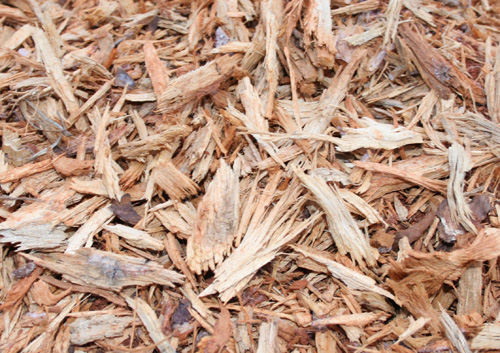Mulch is great in the right quantity, but can be a handicap to plant growth if applied incorrectly.
By definition, mulch is a layer of porous material covering the surface of the soil. In forests, leaf litter creates surface mulch. Mulch materials are either inorganic or organic. Inorganic mulches include lava rock, gravel, crushed rock and landscape fabrics. Organic mulches include bark, wood chips, pine straw, grass clippings and leaf litter or composted leaves.
Inorganic materials last a long time because they do not decompose readily. Organic materials will decay and break down – but as this occurs, they add organic matter and nutrients to the soil. Organic matter in soil stabilizes soil structure and feeds microorganisms. Fresh or succulent material decomposes faster than dry or woody material, and smaller particles break down faster than larger pieces.
A layer of mulch provides several benefits to plants and soils including reducing water loss by slowing down surface evaporation, minimizing weed competition, moderating temperature changes in the surface of soil, improving soil structure, retarding erosion, reducing negative plant interactions with maintenance equipment and reducing soil compaction. Mulch is also attractive and enhances landscape design.
To gain the benefits listed above, apply mulch in a layer at least 2 inches deep, but no more than 4 inches. Fibrous roots extend well beyond the drip-line, or the outer perimeter of the leaf canopy, so mulch should be applied over as large an area as possible. Do not apply mulch on stems, trunks or root flares of trees, and leave a few inches of bare soil around young plants. Mulch may not be required around plants on a wet site because it might restrict airflow into the soil.
Too much mulch around plants is bad for plants because it:
• Contributes to root rot by reducing aeration and trapping water.
• Promotes development of roots into mulch rather than the soil.
• Retards root development, which leads to reduced shoot growth.
• Reduces activity in phloem tissue and can cause tissue death.
• May make plants susceptible to cold injury if hot spots of decomposition that delay winter hardiness are present.
• Provides habitat for rodents.
• Inhibits movement of oxygen and water to soil.
The bottom line is the right amount of mulch around landscape plants helps sustain healthy plants and soil, but too much or too little mulch exposes both plants and soils to environmental and biological stress.








